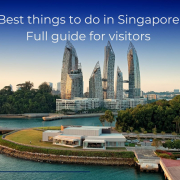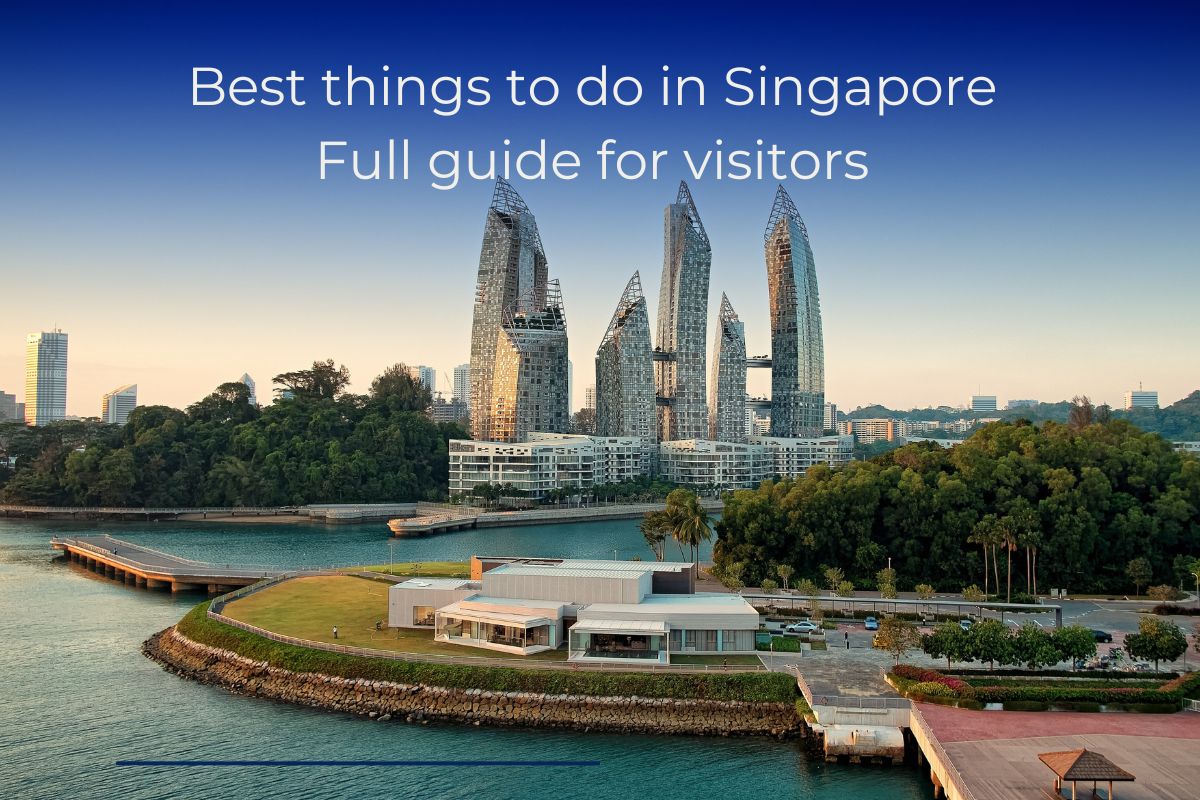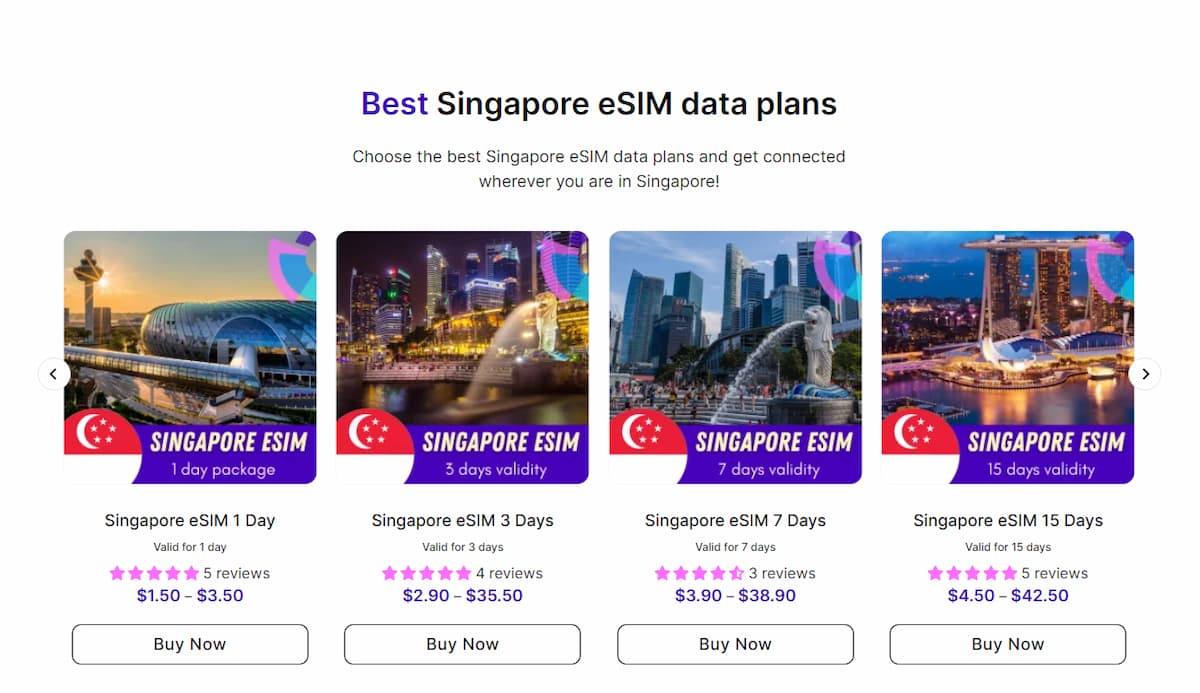Things to Do in Singapore
Singapore is a vibrant and dynamic city-state known for its unique blend of cultures, rich history, stunning architecture, and world-class attractions. Whether you’re a foodie eager to sample delightful local dishes, an adventure seeker looking for thrilling activities, or a culture enthusiast dreaming of exploring art and heritage, there are countless things to do in Singapore to make your visit unforgettable.
This blog post will guide you through the best times to visit, highlight must-see attractions, share tips on staying connected, and outline essential preparations you’ll need for a smooth trip.
I. When is the Best Time to Visit Singapore
Understanding Singapore’s climate and seasonal variations is crucial for planning your trip effectively. The country experiences a tropical rainforest climate characterized by high humidity levels and consistent temperatures year-round. However, knowing when to visit can help you avoid crowds, enjoy pleasant weather, and take advantage of festivals and events.
Climate Overview
-
Singapore has a warm, humid equatorial climate with temperatures ranging from 25°C to 31°C (77°F to 88°F) throughout the year.
-
Rainfall is frequent, particularly during the monsoon seasons, which generally occur between November and January and June to September.
-
During the monsoons, sudden heavy showers can disrupt outdoor plans, but they often pass quickly, leaving the air fresh and cooler. The dry season, typically occurring from February to April, is favored by many travelers as it offers less rain and more sunshine, making it ideal for exploring the city’s outdoor attractions and enjoying strolls around Marina Bay.
Festivals and Events
Singapore’s cultural diversity means something exciting is always happening, regardless of the time of year. Visiting during major festivals allows you to immerse yourself in local customs and traditions.
-
Chinese New Year: Celebrated between late January and mid-February, this is a time for family reunions and festive celebrations, including colorful parades, lion dances, and delicious food fairs.
-
Hari Raya Puasa: This festival marks the end of Ramadan, usually falling in May. The streets come alive with colorful decorations, and the community engages in joyous celebrations, food markets, and cultural performances.
-
Deepavali: Celebrated by the Indian community, this Festival of Lights takes place in October or November. Clarke Quay and Little India are adorned with twinkling lights and festive displays, creating an enchanting atmosphere.
Visiting Singapore during any of these occasions will not only give you insight into the rich tapestry of cultures, but also allow you to taste traditional foods and participate in unique activities.
Tourist Crowds
If you prefer quieter travel experiences, consider visiting during the shoulder seasons, which are between February to March and August to October. During these months, you can enjoy popular tourist attractions without long queues and crowded spaces. While some events may be less frequent during these times, you’ll find that many establishments offer discounts and special promotions to attract visitors.
In conclusion, the best time to visit Singapore largely depends on your preferences—whether you prioritize pleasant weather, vibrant festivals, or fewer crowds. Regardless of when you choose to go, you’ll discover plenty of exciting things to do in Singapore that will leave lasting memories.
II. Best Things to Do in Singapore
When it comes to exploring Singapore, the list of activities and attractions is endless. From iconic landmarks to hidden gems, here are some of the best things to do in Singapore that you simply cannot miss.
Iconic Landmarks
Every traveler should start their journey by visiting the most recognizable landmarks that define Singapore’s skyline.
-
Marina Bay Sands: This architectural marvel offers stunning views of the city from its SkyPark observation deck. Don’t miss the spectacular nightly light and water show at the Marina Bay waterfront.
-
Merlion Park: Here, you can take selfies with the iconic Merlion statue, symbolizing Singapore’s humble beginnings as a fishing village. Enjoy the views of the Marina Bay Sands and the Esplanade while soaking in the vibrant atmosphere.
-
Gardens by the Bay: A breathtaking garden located right next to Marina Bay, it features the impressive Supertree Grove, Cloud Forest, and Flower Dome. Be sure to catch the Garden Rhapsody light show that illuminates the Supertrees at night.
Cultural Neighborhoods
Dive deep into Singapore’s diverse heritage by exploring its various cultural enclaves.
-
Chinatown: Discover the rich history of the Chinese community in Singapore. Visit the Buddha Tooth Relic Temple, wander through bustling street markets, and savor delicious hawker fare at the Maxwell Food Centre.
-
Little India: Experience the vibrant colors, scents, and sounds of this neighborhood. Shop for traditional textiles, indulge in Indian cuisine at the famous Banana Leaf Apollo, and admire the ornate Sri Veeramakaliamman Temple.
-
Kampong Glam: This area is the heart of the Malay and Muslim community in Singapore. Visit the stunning Sultan Mosque, explore trendy boutiques along Haji Lane, and enjoy Middle Eastern delicacies at one of the local restaurants.
Culinary Adventures
Food lovers will rejoice in Singapore, often referred to as the food capital of the world. The city offers an array of culinary delights that reflect its multiculturalism.
-
Hawker Centers: These open-air food courts are a must-visit. Sample popular dishes like Hainanese chicken rice, laksa, and chili crab all in one location. Lau Pa Sat and Maxwell Food Centre are two excellent options.
-
Fine Dining: If you’re looking for a posh dining experience, Singapore boasts numerous Michelin-starred restaurants such as Odette, Burnt Ends, and Les Amis. Treat yourself to gourmet meals crafted by world-renowned chefs.
-
Food Tours: Join a guided food tour to explore hidden gems and local favorites while learning about Singapore’s culinary history. This is a great way to meet fellow food enthusiasts and taste authentic dishes.
In summary, Singapore is a treasure trove of experiences just waiting to be explored. From iconic landmarks to cultural neighborhoods and culinary adventures, there’s no shortage of things to do in Singapore for every traveler.
III. Traveling to Singapore: How Can I Stay Connected in Singapore?
Staying connected while traveling is essential for navigating new places, sharing experiences, and keeping in touch with friends and family. Fortunately, in Singapore, connectivity is easily accessible, allowing you to stay online with ease during your visit.
-
Free WiFi Access
One of the perks of traveling in Singapore is the widespread availability of free WiFi throughout the city.
-
Public Areas: Many public locations, such as parks, shopping malls, and airports, provide complimentary WiFi access. Simply look for the “Wireless@SG” network, and follow the instructions to log in.
-
Libraries and Community Centers: Local libraries and community centers also have free WiFi. You can settle in with a book while staying connected.
Using free WiFi is a great way to save on data costs, especially if you plan to do light browsing or check your social media accounts. However, be cautious about security when using public networks.
-
Using a Local SIM Card
Purchasing a local SIM card is a popular option for travelers who want constant connectivity during their stay.
-
Convenience: Local SIM cards are inexpensive and can provide ample data packages. You can purchase them upon arrival at Changi Airport or at convenience stores around the city.
-
Easy Activation: Activating a local SIM card is straightforward. Most providers include instructions, and staff members can assist you if needed.
With a local SIM card, you’ll be able to use navigation apps, communicate with travel companions, and keep up with updates on the go. Having reliable internet access can enhance your travel experience significantly.
-
Buying Singapore eSIM from singesim.com
For those who prefer a digital solution, consider purchasing an eSIM from platforms like singesim.com. eSIM technology has changed the way people connect to the internet while traveling abroad due to its conveniences:
-
Instant Activation: An eSIM allows you to activate a mobile data plan without needing a physical SIM card. You can download it directly onto your smartphone.
-
Flexibility: With an eSIM, you can easily switch between different carriers according to your needs, avoiding the hassle of changing physical SIM cards.
-
Environmentally Friendly: Since eSIM technology eliminates the need for a plastic SIM card, it’s a sustainable choice for eco-conscious travelers.
Singesim.com is the #1 eSIM provider in Singapore which offers diverse plans for any traveling goals. Find the best plan for your trip below.
IV. Top Essential Things to Prepare When Traveling to Singapore
Traveling to a new country involves thorough preparation to ensure a smooth and enjoyable experience. Here are some top essential things to prepare for before embarking on your journey to Singapore.
Travel Documents and Visa Requirements
Before booking your flight, familiarize yourself with the necessary travel documents and visa requirements for entering Singapore.
-
Passport Validity: Ensure your passport is valid for at least six months from your date of entry. This applies to most nationalities; however, always double-check specific regulations based on your home country.
-
Visa Requirements: Depending on your nationality, you may require a visa to enter Singapore. Some countries are visa-exempt for short stays, while others must apply for a tourist visa in advance. Check the Immigration and Checkpoints Authority website for updated information.
Having the correct documentation ready will prevent any last-minute surprises upon arrival.
Health and Safety Preparations
Health considerations are essential when traveling.
-
Vaccinations: Although there are no mandatory vaccinations for entering Singapore, it’s wise to be up-to-date on routine immunizations. Additionally, travelers from certain countries may be required to show proof of vaccination against diseases like yellow fever.
-
Health Insurance: Invest in comprehensive health insurance that covers medical emergencies, trip cancellations, and theft. Check with your provider to understand what is included in your policy.
By prioritizing your health and safety, you can enjoy a worry-free trip while experiencing the captivating things to do in Singapore.
Local Currency and Payment Methods
Understanding the local currency and payment options available will enhance your financial preparedness during your travels.
-
Currency: The official currency in Singapore is the Singapore Dollar (SGD). Familiarize yourself with the exchange rates before your trip and consider exchanging some money in advance for initial expenses.
-
Cashless Payments: Singapore is known for its cashless society, and most transactions can easily be completed using debit or credit cards. Mobile payment options such as Apple Pay, Google Pay, and GrabPay are widely accepted.
-
ATMs: ATMs are readily available across the city, providing 24/7 access to cash withdrawal. Always notify your bank before traveling to avoid issues with card usage overseas.
By preparing your finances ahead of time, you’ll minimize stress and maximize enjoyment during your stay.
Conclusion
In conclusion, Singapore is a fascinating destination filled with an abundance of things to do in Singapore. From its stunning blend of modern architecture and rich cultural heritage to diverse culinary delights, there’s something for everyone. By understanding the best times to visit, discovering top attractions, ensuring seamless connectivity, and preparing effectively for your trip, you can create unforgettable memories in this incredible city-state.






